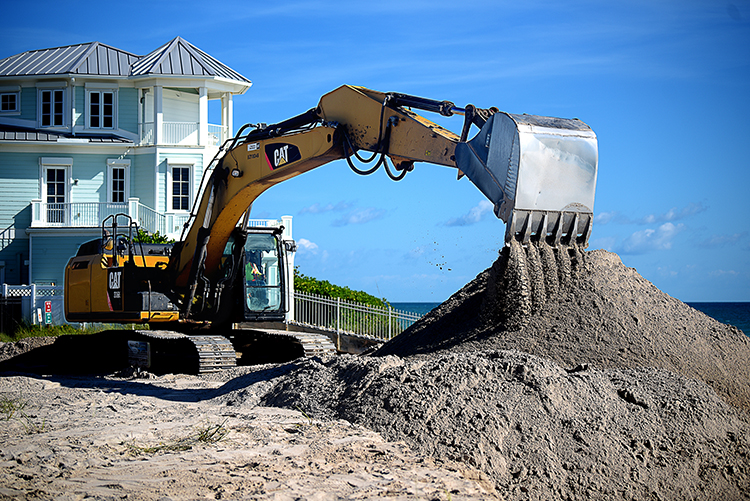
Despite several strong hurricanes and winter storms, the island’s more than 22 miles of beaches expanded – on average – by about 2 feet between 2013 and 2019, due to beach renourishment projects and the natural deposit of sand carried by ocean currents and waves.
That’s the finding reported by the coastal engineering firm helping the county update its beach preservation plan first adopted in 1988 and revised multiple times since then.
The massive document prepared by Stantec Consulting Services found that county projects to fill in sand on eroded shorelines and build up dunes is the most cost-effective strategy for managing beaches in the future.
Stantec found that, taken as whole, the island’s beaches gained close to 4 inches of width each year, between 2013 and 2019, amounting to approximately 2 feet during the period.
“Countywide that’s a really good number,” said county commissioner Peter O’Bryan. “Looking at the projects we’ve done, I think we have done a good job with our beaches. I know a lot of people think it’s a waste of money. [But] in my mind, beaches are critical infrastructure … a key part of our community and why people come here.”
But not all eight sectors of the island’s coastline grew equally and some actually lost sand, according to the consultants’ report.
The northernmost section of the beach just south of Sebastian Inlet –where the Sebastian Inlet District deposits sand from a storage pit inside the inlet – shrank, while adjacent Ambersand Beach expanded slightly.
The three sections extending from Treasure Shores Beach Park through Central Beach to Riomar Golf Course showed losses, as did South Beach from Treasure Cove to Floralton Beach. But the beach in front of Castaway Cove the one south of Floralton to Round Island Park showed healthy gains.
O’Bryan wanted to know why two sections of South Beach were gaining sand while the beach in between them was retracting.
County natural resources manager Eric Charest said the shrinking section “bows out and that plays a role in downstream transport of the sand,” while the surrounding beaches are “kind of catching sand.”
In other words, sand washed away on the part of the beach that protrudes into the ocean and built up on more sheltered stretches nearby.
The county is nearing completion of the $14 million restoration of critically eroded beach and dunes from Seaview subdivision to Wabasso Beach Park before sea turtle nesting season begins in May.
The county expects to begin renourishment of the section from Wabasso to Turtle Trail Beach Park next fall after nesting season is over. County administrator Jason Brown told commissioners he’s confident of receiving $7 million for the project from the state legislature this year.
The updated beach plan recommends that the county prepare for impacts from more frequent storms expected due to climate change and sea level rise by conducting more beach maintenance instead of full-blown renourishment projects.
It also calls for wave modeling, investigating offshore sources of sand, securing property owner access easements for future projects, and continued planting of native dune plants. The plan was endorsed unanimously by the county’s beach and shore preservation advisory committee.
In addition, O’Bryan suggested mapping the county’s nearshore hardbottom reefs that have high relief and help protect the beaches from losing sand, and producing educational brochures to show beachgoers the value of sargassum that washes in from the Gulf Stream to stabilize dunes and create habitat for birds and other wildlife.
Residents and visitors often complain when the seaweed builds up on island beaches, but it plays an important part in keeping beach sand in place.



